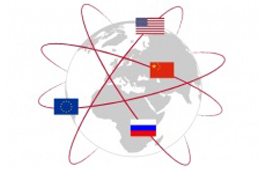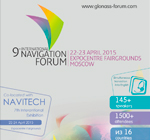GNSS Complementarity Data Acquisition

21 March 2014
In the framework of the 8th International Navigation Forum the Federal Space Agency Roscosmos plans to hold a seminar for Russian industry representatives on determining criteria of GNSS complementarity, with the participation of ICG observers, who will attend the Forum. In this context the secretariat of the board of Consumer Navigation Equipment (CNE) designers updated and optimized a list of questions to questionnaire CNE developers and manufacturers and offers you to review it and to send your opinions before April 10, 2014.
Received answers will be reviewed, summarized and presented at the seminar in the framework of the Forum on April 24, 2014.
Please send your proposals by email:
romanova_ya@gk-nap.ru;
silin_sv@gk-nap.ru;
grebenyk_ip@gk-nap.ru
or fax +7(495) 641-4086
Contact phone: +7(495) 641-4085
Also you can send your answers to the Forum press office with the subject line "GNSS Complementarity".
Email:office@proconf.ru
Questions:
1. Place name application areas of GNSS receivers developed by you.
2. The big number of navigation signals with 1575.42 MHz center frequency can cause the malfunction of consumer navigation devices. Considering this, do you prefer that all signals at the L1 band have 1575.42 MHz center frequency or do you admit to having another center frequency, for example 1602 MHz?
3. How do you think, are there commercial prospects for FDMA signals when there are many CDMA signals? Explain your answer.
4. Do you prefer to use signals at different L1 band frequencies to increase interference immunity, or do you prefer to use a signal at one center frequency to ensure complementarity? Why?
5. Do the providers have to make arrangements about minimum international quality standards and to agree to provide signals in compliance with theses standards in order to guarantee providing only quality signals?
6. If the L5/E5a signal is provided by the majority of GNSS providers, do you intend to use the E5b signal? For what purposes?
7. If we assume that the signal quality of each provider is acceptable, is it necessary to limit the number of signals delivered by providers, and on what criteria?
8. How important are the common center frequency and common spectrum for maximum complementarity?
9. In the future will it be possible to ensure the opportunity of the navigation by signals of three GNSS constellations, and in this case will it be preferable to have one center frequency or the combined use of L2, B3 and E6 signals)?
10. Will the wider frequency range of a transmitter help reduce the multipath propagation effect?
What minimum transmitter bandwidth can be recommended for future GNSS signals to get optimum accuracy results with the use of code measurements?
12. Do you advise that the providers of GNSS and SBAS services share complementarity parameters: time zones, coordinate system difference, ARAIM, etc.?
13. In your opinion, does the international community have to protect all GNSS signal bands from interferences caused by ground-based device signals?
14. Will the advanced equipment calculate the system time shift based on measurements or outsource the shift data?
15. What method of receiving discrepancies do you prefer: navigation message, Internet, hardware computation?
The source: KB NAVIS

































































